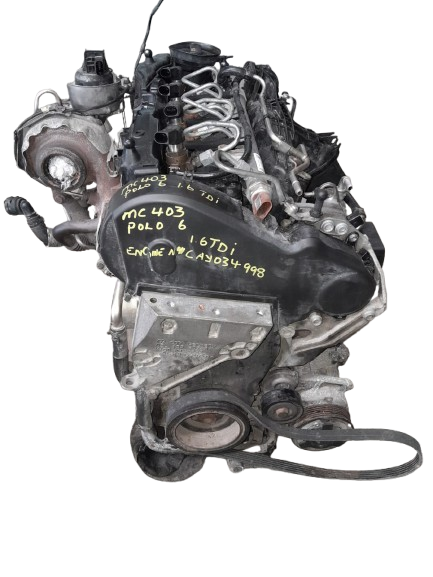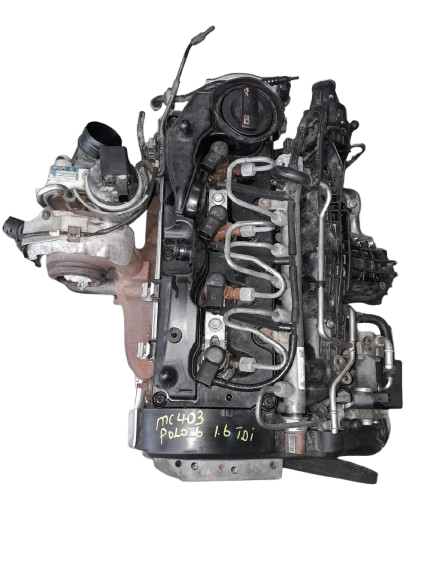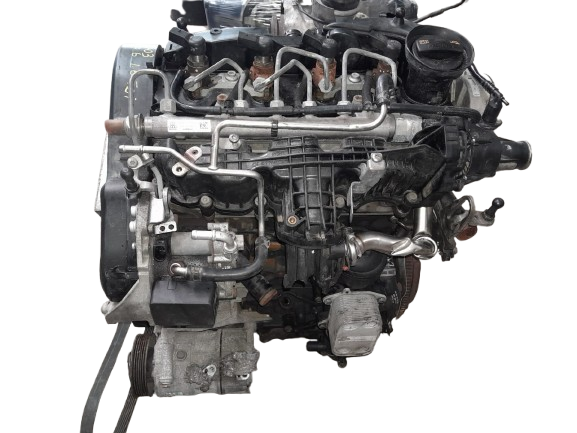


Overview of the VW Polo 6 1.6 TDI (CAY Engine)
The Volkswagen Polo 6 equipped with the 1.6 TDI engine (engine code CAY) is a compact and efficient diesel powerplant known for its balance of performance and fuel economy. This inline-four, turbocharged diesel engine is part of the EA189 engine family and was commonly found in various VW Group vehicles between 2009 and 2015. The engine’s structure consists of three primary sections: the cylinder head, engine block, and oil sump. Each plays a critical role in the engine’s functionality, durability, and efficiency.
Cylinder Head
The cylinder head of the CAY engine is made from lightweight aluminum alloy, offering good thermal conductivity and reduced overall engine weight. It houses four valves per cylinder (16 valves total), controlled by dual overhead camshafts (DOHC). The camshafts are driven by a timing belt, and the head also contains the injectors, glow plugs, intake/exhaust ports, and valve train components.
Notably, the CAY engine features piezoelectric injectors for high-precision fuel delivery, enhancing fuel economy and reducing emissions. The integrated exhaust gas recirculation (EGR) system and diesel particulate filter (DPF) systems also tie into the head design, making it critical for compliance with Euro 5 emissions regulations.
Engine Block
The engine block is constructed from cast iron, providing strength and durability to withstand the high pressures of diesel combustion. The 1.6 TDI features a closed-deck design, ensuring rigidity and structural integrity. It contains four inline cylinders, each with an 80.5 mm bore and a 79.5 mm stroke, yielding a displacement of 1598 cc.
Inside the block are the crankshaft, connecting rods, and pistons, all engineered to handle the stresses of turbocharged diesel operation. The crankshaft is supported by five main bearings for smooth rotation and longevity. Additionally, coolant and oil passages are integrated within the block for optimal thermal management and lubrication.
Oil Sump
The oil sump is located at the bottom of the engine and is usually made from aluminum or steel, depending on the model year. It serves as the reservoir for engine oil, which is essential for lubrication, cooling, and hydraulic actuation. The sump also houses the oil pickup tube, which channels oil to the oil pump, ensuring a constant supply of lubrication to internal engine components.
In some versions, the sump incorporates baffles to prevent oil starvation during sharp turns or sudden braking. A drain plug at the bottom allows for easy oil changes. The oil level sensor and temperature sensor may also be mounted in or near the sump area.
Conclusion
The CAY 1.6 TDI engine in the VW Polo 6 is a compact yet robust unit. Its aluminum cylinder head with modern fuel injection, strong cast-iron block, and practical oil sump design all contribute to its reliability and efficiency. Proper maintenance of these three major engine sections is key to ensuring long-term performance and avoiding common issues such as timing belt wear, injector clogging, or oil sludge buildup.
